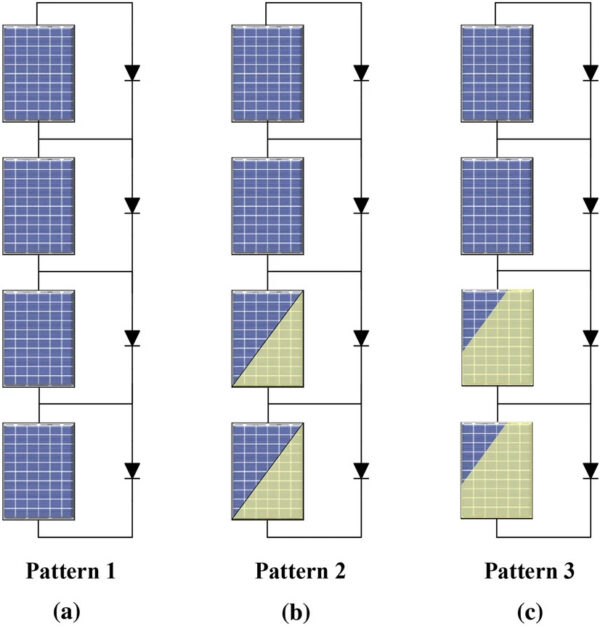Calculating the desired duty cycle involves using the PV system’s existing sensors to estimate radiation, derived from changes in PV cell current and voltage.
“The proposed technique minimises the overall system cost by reducing the number of the required sensors by utilising a radiation estimation strategy,” the researchers said. “The DDCC technique boosts the overall system efficiency by the steady-state oscillations elimination, hardware simplification, and ease of implementation. Additionally, the DDCC has a fast-tracking speed for global maximum power point tracking (GMPPT) extraction during partial shading conditions.”
The researchers presented the results of the comparison between the MMPPT and the SMPPT system in “Investigation of single and multiple MPPT structures of solar PV‑system under partial shading conditions considering direct duty‑cycle controller,” which was recently published in Scientific Reports. The systems were simulated in MATLAB/SIMULINK software, under three shade conditions.
All four PV strings were subjected to uniform irradiance of 1,000 W/m2 in the first shading pattern. In the second pattern, however, the first two strings had a constant irradiation profile of 1,000 W/m2, while the other two had a uniform irradiance profile of 1,000 W/m2 for half a second, and then stepped down to 500 W/m2 for another half a second.
In the third pattern, the first two strings were again under a uniform irradiance profile of 1,000 W/m2, while the remaining two started with 1000 W/m2 for 0.3 seconds, changed to 500 W/m2 for another 0.3 seconds and decreased to 250 w/m2 for 0.4 seconds.
“Under these conditions, the average efficiency of the SMPPT system is found to be 98.98%, while the MMPPT system achieves an efficiency of 99.81%. These findings validate the proposed approach,” the researchers concluded. “A real radiation dataset from Benban, a location in southern Egypt, is used in MMPPT configuration. The results demonstrate that the proposed control system enhances overall system effectiveness while reducing installation costs.”









By submitting this form you agree to pv magazine using your data for the purposes of publishing your comment.
Your personal data will only be disclosed or otherwise transmitted to third parties for the purposes of spam filtering or if this is necessary for technical maintenance of the website. Any other transfer to third parties will not take place unless this is justified on the basis of applicable data protection regulations or if pv magazine is legally obliged to do so.
You may revoke this consent at any time with effect for the future, in which case your personal data will be deleted immediately. Otherwise, your data will be deleted if pv magazine has processed your request or the purpose of data storage is fulfilled.
Further information on data privacy can be found in our Data Protection Policy.